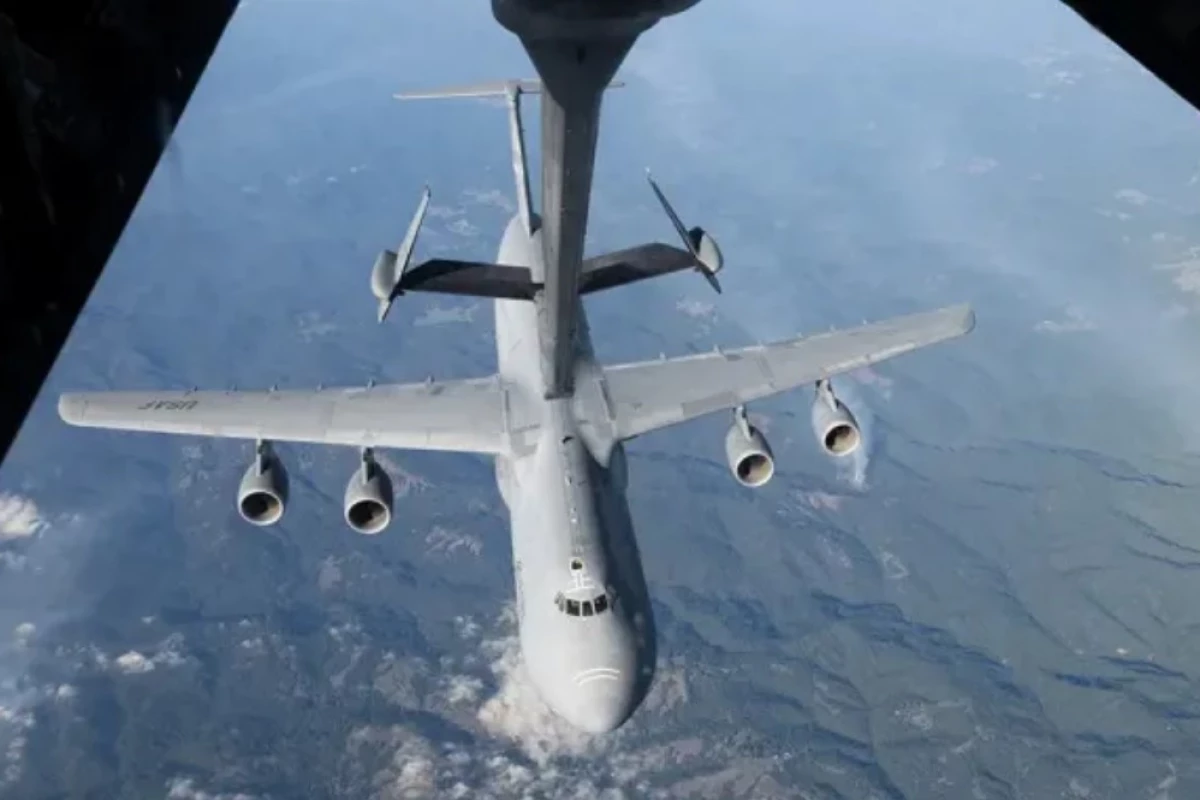In a topsy-turvy bit of military aviation, the US Air Force used a C-5M Super Galaxy heavy transport to refuel a KC-10 Extender refueling tanker aircraft, pumping fuel backwards up the boom from transport to tanker instead of the other way around.
First conceived in the 1920s, inflight refueling has developed from a dangerous stunt to a vital part of the infrastructure of the major military powers. The idea is to vastly extend the range of warplanes to prevent problems often seen during the Second World War when bombers had the flight unescorted by their shorter range fighter planes, which had to turn back. It also allowed for extremely long range missions like the famous raid on Port Stanley Airport during the Falklands War in 1982, where Vulcan bombers based in England flew nonstop to the South Atlantic and back.
The process of a tanker plane using a mechanical boom to hook up to a trailing aircraft and pumping fuel into it may look the same today as in the opening credits of Dr. Strangelove, but it's undergone considerable evolution over the past six decades. Instead of relying on two attentive pilots and a highly skilled boom operator, engineers have developed increasingly autonomous systems that control both aircraft as well as the boom for increased safety and efficiency.
However, there's still the problem of how to refuel the refueler. The obvious answer is to return to base for another load or to use a second tanker to refuel the first, but both of those mean taking a tanker out of service when they could be tending to other aircraft.
To overcome this, the US Air Force's 22nd Airlift Squadron (AS) is experimenting with a new concept where, on December 12, a C-5M Super Galaxy transport in the skies over Northern California and Oregon hooked up with a KC-10 Extender. From the outside, it looked like a normal refueling maneuver, but it was actually running in reverse. Instead of the aviation fuel going into the C-5M, the C-5M was pumping the fuel into the KC-10 tanker. In this case, 23,500 lb (10,700 kg) of fuel in approximately 30 minutes.
According to the Air Force, it's still early days and the recent demonstration was intended to gather data to further refine the technique, especially since the two aircraft fly differently as their weights shift. If it succeeds, it could mean air missions can remain in the air longer with more aircraft operating at longer ranges.
"By using a C-5 as a huge floating gas station, it allows more tankers to be positioned for offloading to fighter or mobility aircraft, versus having to use one tanker to refuel another, which takes away a tanker asset from the mission," said US Air Force Major Justin Wilson, 22nd AS chief of standards and evaluations and C-5M evaluator pilot. "This allows more tanker aircraft in the theater and extends their range or orbit time."
Source: US Air Force





